10 LMS reports to track for training success in 2023
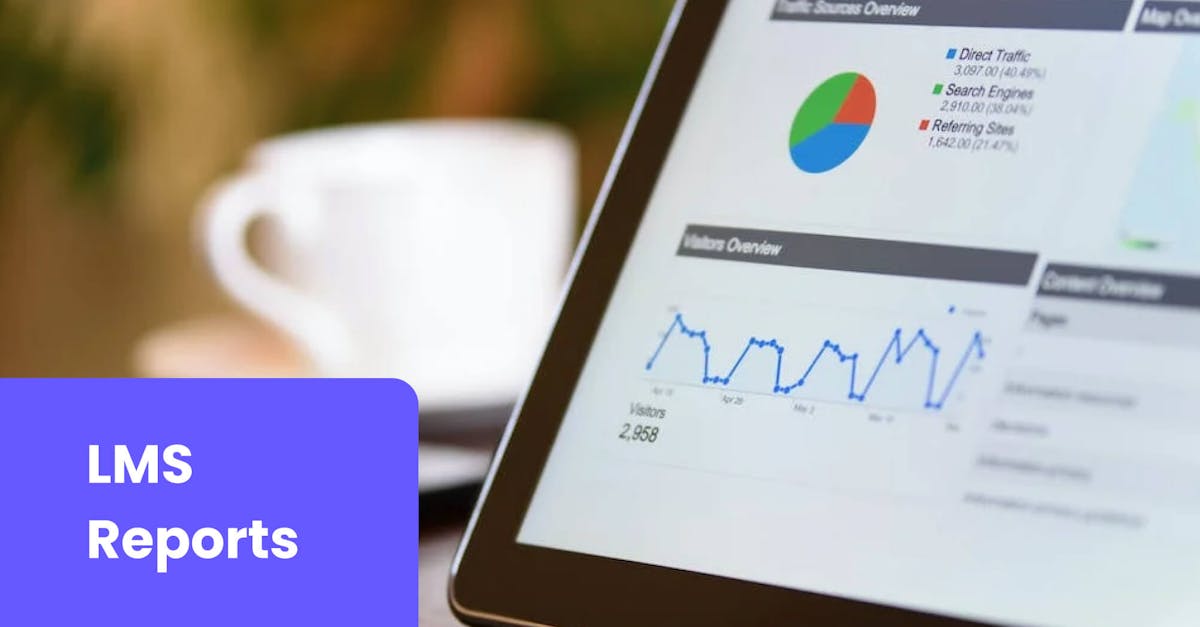
As we step into 2023, Learning Management Systems (LMS) continue to be a vital tool for managing and monitoring employee training programs. To guarantee the success of your training initiatives, it's important to know which LMS reports to monitor. This article looks at the top LMS reports to keep your training programs on track with your organization's goals.
1. Assessment Results
Assessment results show how well users are performing on assessments and quizzes within a training course. By analyzing this LMS report, you can identify certain areas where your learners may be struggling and start a training program that would essentially help them. The data from your course evaluation can also be used to measure the effectiveness of your existing training program and make data-driven decisions about future training plans.
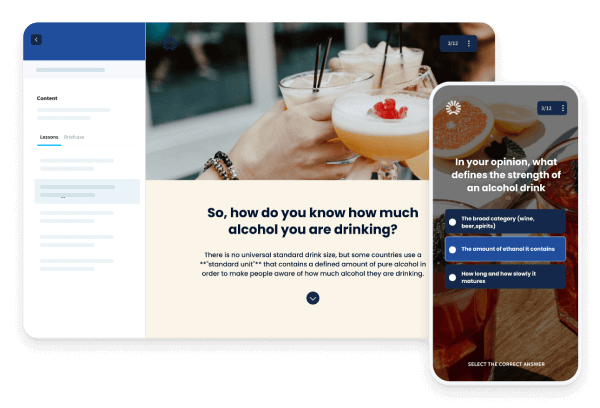
If you’re looking for a great LMS portal that would monitor your assessment results, then EdApp is the way to go. Their analytics suite automatically tracks the results of all quizzes and assessments created on the platform. This way, you’ll no longer need to rely on manual tracking using paper checklists or spreadsheets. You’ll also benefit from its real-time LMS reporting features, which help you get immediate insights into assessment results and make improvements where necessary.
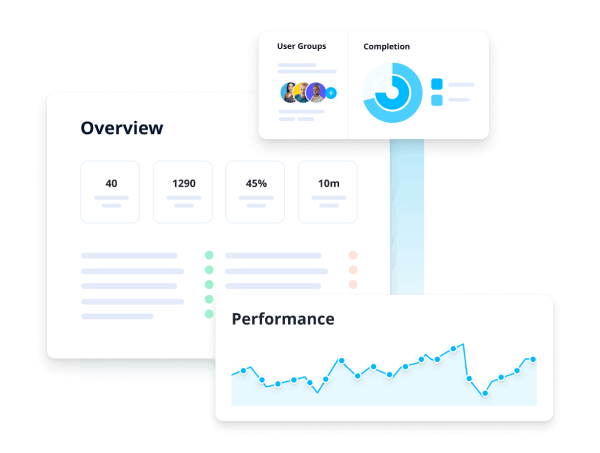
Need help creating your quizzes and assessments? EdApp’s Rapid Refresh quiz maker has you covered!
Set up your quizzes in minutes and deliver them automatically to your teams for free.
2. Completion Rates
Completion rates measure the percentage of users who have completed a specific training course or program. This helps you determine which of your courses or programs are the most and least popular with your learners.
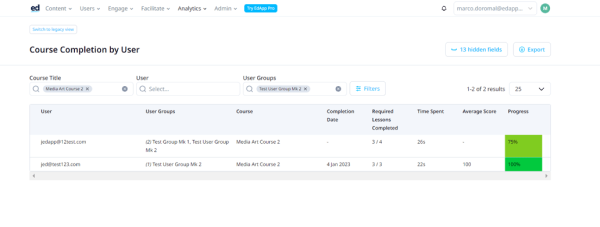
Low completion rates can be an indication of issues with course content or delivery. And the data from this LMS reporting can help you make better decisions on how to improve your training programs to encourage higher participation from your team.
EdApp makes it easy to track completion rates by giving detailed analytics on user progress and course completion. More particularly, this LMS training portal can help you identify those with partial completions, those who logged in but never started any courses, those who’ve never logged in, and those with a low completion rate. You can use this information to target these types of learners and send them push notifications to encourage them to take and finish their training.
3. Engagement Metrics
Engagement metrics show how engaged your learners are with the training content. This type of LMS report can include data such as time spent on each course or lesson, frequency of logins, and interactions with quizzes or assessments.
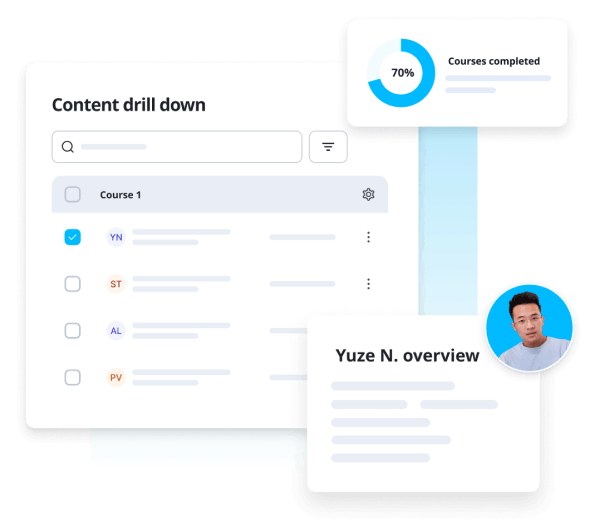
These metrics can help you better understand how users are engaging with content, whether they are completing courses, and how effectively the content is meeting their needs.
Pull everything you need to know about your training engagement with EdApp. The platform's analytics suite generates real-time insights and reports about learners' behavior, including how much time they spend reading lessons, answering quizzes, and checking their courses. Even general data like log-in dates and times can be tracked, if needed.
What’s more is that you can also customize reports to focus on the engagement metrics that are most relevant to your training needs. Feel free to export the report to CSV or Excel format to analyze your engagement data further.
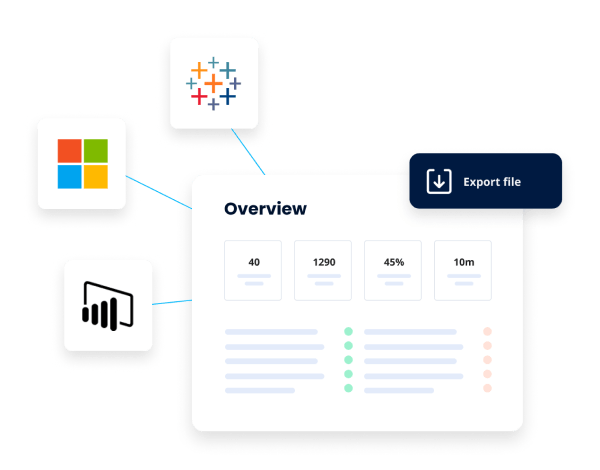
4. Survey results
Survey results are feedback gathered from learners about their experience with the training program. The feedback can include their satisfaction with the course content, the delivery method, and the overall effectiveness of the training.
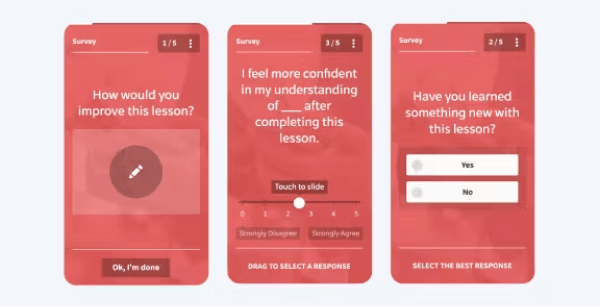
By understanding the learner's experience and incorporating their feedback, you can tailor the training program to better meet their needs, increase engagement, and ultimately lead to better learning outcomes.
5. Skill gap analysis
A skill gap analysis helps you compare the skills needed for a job to the skills of the employees doing that job. You can do this by looking at job descriptions, performance reviews, and feedback from supervisors.
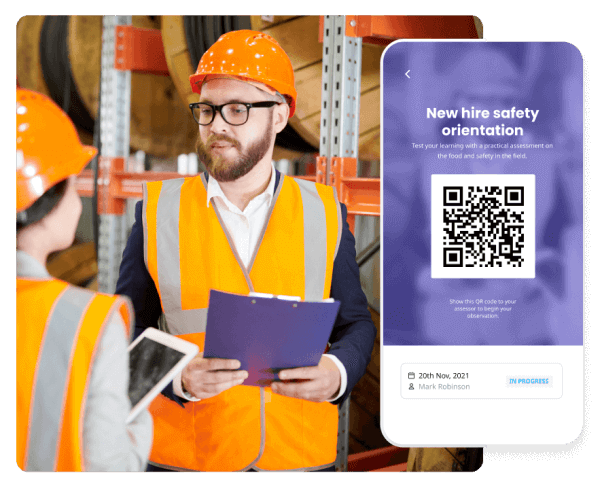
It's important to track this LMS report because it helps you spot any gaps between what skills the job requires and what skills your employees have. The results of this analysis also uncover areas where employees need more training to meet their job requirements.
6. User progress
A user's progress shows how far your learners have progressed through a particular training program. By tracking this LMS report, you can easily identify which learners are struggling and which are excelling. The data can be used to give additional support and resources to those who may need it, as well as to recognize and reward those who are making significant progress.
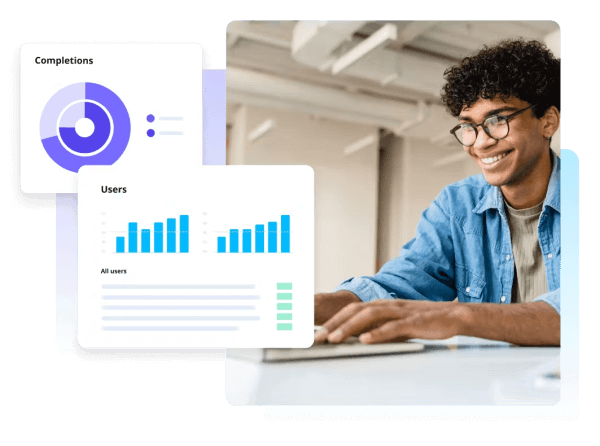
7. Compliance report
A compliance report reveals the level of learners' compliance within the organization, such as their completion of mandatory training and certifications. The primary goal of this report is to make sure that your team's skills and knowledge meet the regulatory requirements of any relevant laws, regulations, and policies.
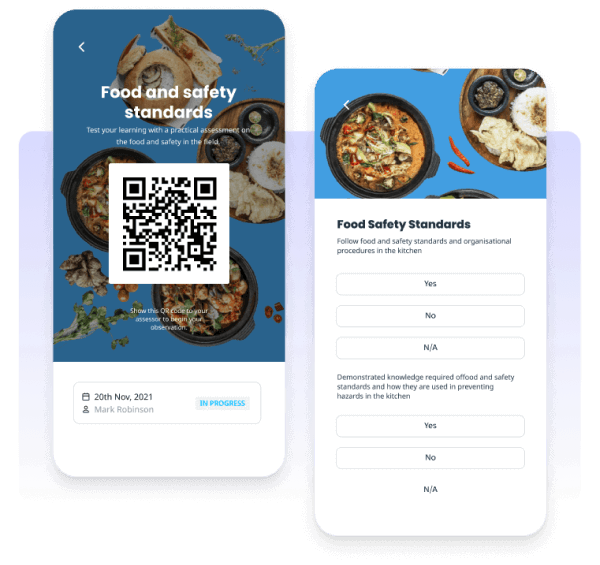
It can also help you find areas of non-compliance, so you can take immediate action before they turn into bigger issues that could get your organization in trouble with the law.
8. Course attendance
A course attendance report is a useful tool for tracking participation in live training sessions and making sure that all employees receive the training they need. This is particularly valuable if your company is required to maintain a team that adheres to specific laws and regulations.
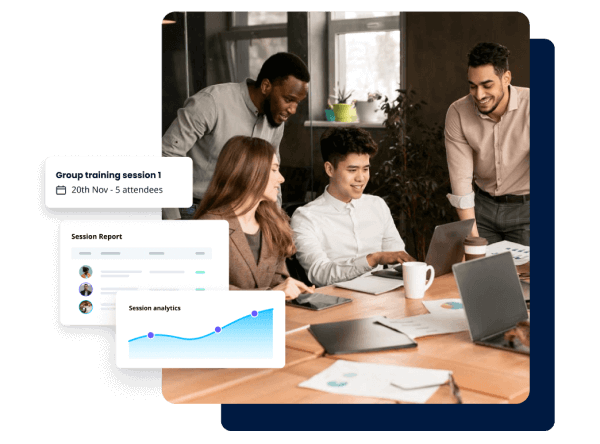
Having a record of course attendance can also help you follow up with those who have missed their training and take appropriate steps to motivate them to attend future sessions.
9. Assignment report
An assignment report, as its name implies, shows how learners are performing on assignments, such as quizzes, essays, or projects. Usually, it’ll give you information on the rate of completion for a task, the number of learners who attempted it, and the percentage of learners who answered correctly or submitted the right output.
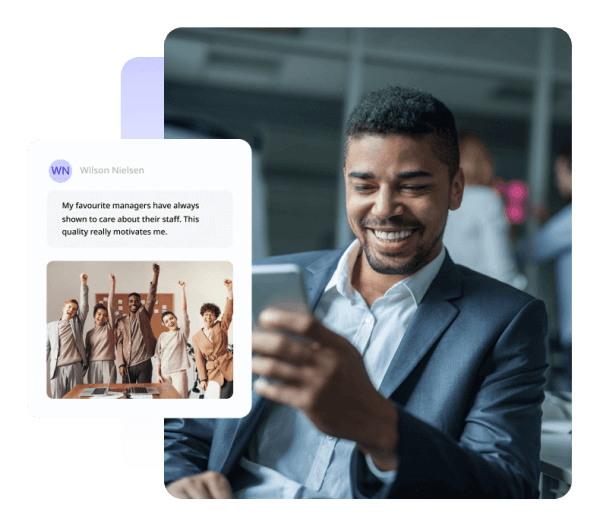
Tracking this LMS report will allow you to see how well your learners are understanding your training content and if they’re meeting their learning objectives.
10. Leaderboard
If your training involves games and quizzes that require some sort of competition, then it only goes without saying that you should track the leaderboard. This LMS report displays the rankings of learners based on their performance in a course. It’s usually presented in a format that shows the top performers on a list, often with their names or usernames and the scores they’ve achieved.
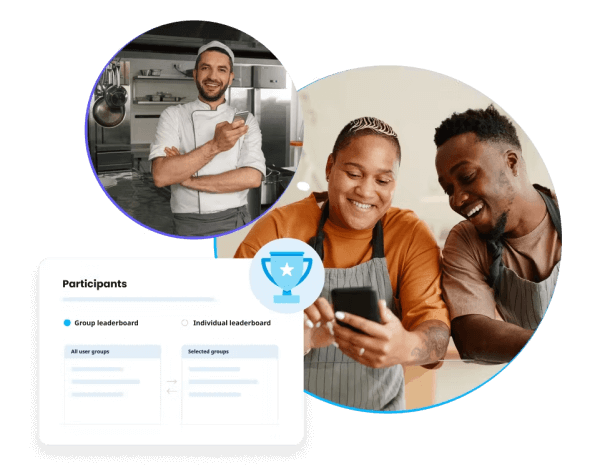
One LMS example with a good leaderboard feature is EdApp. Here, you can create individual leaderboards where learners can go head-to-head with each other or a group leaderboard where they work together in teams to win.
EdApp’s Leaderboard can be used to encourage your learners to compete and strive for higher achievement, as well as motivate those who may need an extra push to complete the course. You can also use it to identify your top performers and give them recognition and rewards for their efforts.
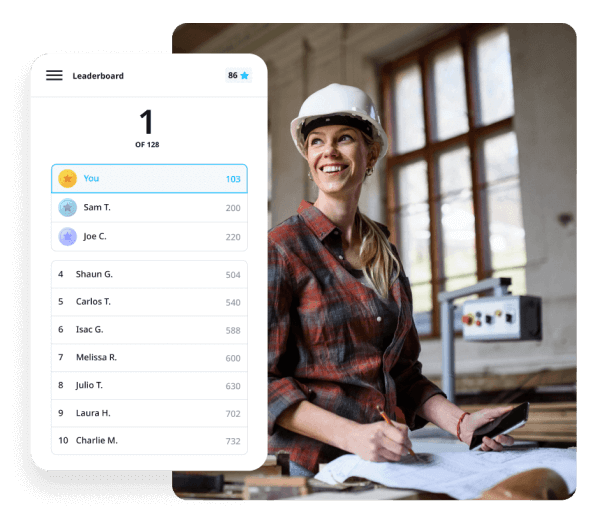
Ready to take your LMS reporting to the next level? Try EdApp's analytics and reporting features!
Author
Jen Avelino
Jen is a learning expert at EdApp, a mobile-based training platform that helps corporates and businesses bring their training solutions to the next level. She carries an extensive writing experience in a variety of fields, including architecture, the gig economy, and computer software. Outside of work, she enjoys her free time watching her favorite series and documentaries, reading motivational books, and cross-stitching.
